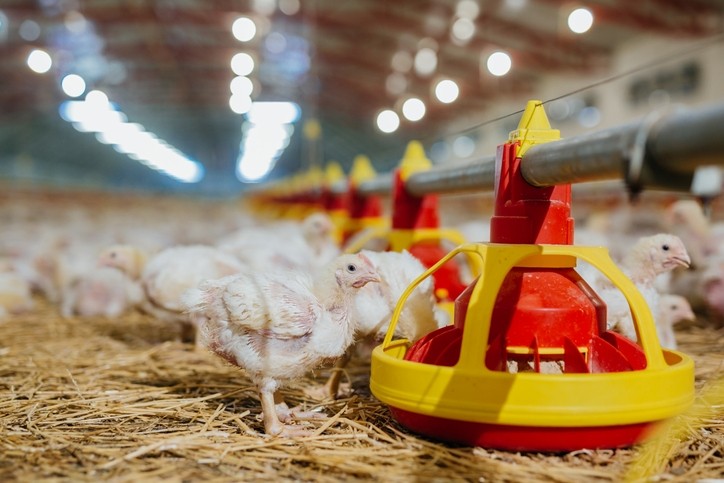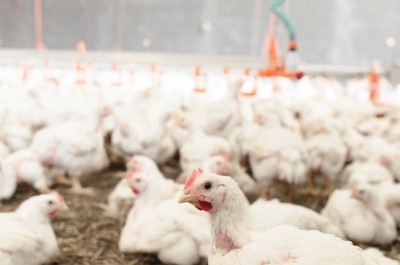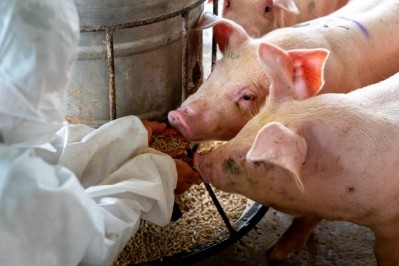Team finds way to boost nutritional quality of rapeseed cake for broiler nutrition

Broiler diets incorporating enzymatically fermented RSC (ER) showed better ileal digestibility of phosphorous, according to a paper in the journal, Animal Feed Science and Technology.
A team of German and Polish poultry nutrition specialists, including Dr Jurgen Zentek from the Institute for Animal Nutrition, Freie Universität Berlin, carried out a study to investigate the effect of partial replacement of soybean meal (SBM) with untreated or fermented rapeseed cakes on growth performance and nutrient digestibility in broilers.
"Despite promising nutritional effects of fermentation of plant materials with enzymes, there is little information available assessing the effects on nutritional quality of rapeseed by-products as well as on performance and nutrient digestibility in broilers," they reported.
Background
The poultry feed sector is facing increasing pressure to be both economically and environmentally sustainable, and, as such, one area of heightened interest for all actors in the poultry supply chain is how to use protein sources in feed in a resource efficient way, noted the authors.
Soybean production has be linked with deforestation and the conversion of areas of natural vegetation in regions of high biodiversity, and, as such, EU regulators and other stakeholders are increasingly looking to decrease EU dependence on soybean imports by exploiting local protein sources.
Among local substitutes for SBM are refined rapeseed products, reported the authors, with the EU being one of the leading global rapeseed growing regions, globally.
The target market for rapeseed processors is oil production, with by-products such as rapeseed pressed cake (RSC) and extracted meal (RSM) attractive alternatives for poultry nutrition, they noted.
While RSC and RSM have less protein compared to SBM, the protein content is higher than in most plant protein alternatives. Furthermore, their amino acid profile compares favourably with SBM. They have more sulphur containing amino acids but less lysine, said the research team.
The major anti-nutritional factors (ANF) in rapeseed, however, are glucosinolates, phytic acid and non-starch polysaccharides (NSP), limiting the use of such by-products in poultry nutrition.
Tackling anti-nutritional factors
Looking at the most common oil extraction methods employed in the vegetable oil production industry, the authors said the hexane based method has been used for decades.
While the toasting stage of the solvent extraction method can deactivate or/and eliminate the ANF like glucosinolates and myrosinase (Khajali and Slominski, 2012), it negatively affects the content and availability of amino acids (AAs) and other heat sensitive nutrients (Newkirk et al., 2003; Goodarzi Boroojeni et al., 2016), they pointed out.
Microbial enzymes are commonly used as feed additives in poultry feed to reduce negative impacts of certain ANF. However, the optimum efficiency of these in-feed microbial enzymes is limited, since their retention time in the upper gut (crop, proventriculus and gizzard) of poultry with optimum pH is relatively short, said the team.
But adding microbial enzymes to a fermentation process could make it more targeted and specific for certain ANF or nutrients and could also prolong the time that these enzymes have access to their substrate, they reckoned.
Such a strategy might simultaneously increase the efficiency of the process as well as the enzymes; enzymatic fermentation may be effective to improve the nutritional quality of RSC, added the authors.
So the team decided to evaluate the effects of fermentation with or without enzymes (phytase, pectinase and β-glucanase) on the nutritional quality of RSC. They also assessed the impact on growth performance and nutrient digestibility in broilers as a consequence of substituting soybean meal (SBM) in the diet with fermented RSC.
Methodology
A batch of rapeseed was cold-pressed in a single screw expeller and air–dried in order to produce RSC for their assessment. The dry matter (DM) content of the produced RSC was 927.8g/kg.
A part of the produced RSC was fermented with (enzymatically) and without (spontaneously) an enzyme mixture at the Institute of Animal Nutrition, Freie Universität Berlin.
A standard maize-wheat-SBM diet was used as the control (CON) in their study. A second experimental diet was produced using untreated RSC (NR; 150g/kg) as a substitute for SBM, while a third and a fourth diet were produced using the RSC that had been fermented either without (SFR; 321.8g/kg) or with (EFR; 312.8g/kg) enzymes. For these two diets, the same diet formulations as NR diets were used.
A fifth diet (NRE) was produced using 150g/kg untreated RSC and in-feed inclusion of the same enzymes, at a similar inclusion level, as present in the EFR diet.
The researchers said they recorded performance variables along with the coefficient of apparent ileal digestibility (CAID) of crude protein, fat, amino acids, calcium (Ca) and phosphorus (P) at the end of the 35-day long trial.
The results
They saw that fermentation of RSC with enzymes effectively reduced its phytate and insoluble NSP content, but, in the absence of enzymes, fermentation had only a moderate effect on reducing insoluble-NSP concentration.
Diets had no impact on body weight gain or feed intake in this study, they noted.
At the end of the starter period (day 1–21) and the entire experiment (day 1–35), feed conversion ratio (FCR) in broilers fed the NRE diet was lower compared with those receiving the CON or NR diet, they said.
Broilers in the EFR treatment group, up to the end of the starter phase, displayed lower FCR than those in the CON or NR group, but, at day 35, birds fed the EFR diet showed lower FCR compared with those fed the NR diet, noted the authors.
The experimental diets had no impact on CAID of crude protein, fat, and all of the amino acids, except cysteine and glycine, they reported.
Birds receiving the EFR and NRE diets showed higher CAID of P compared with those fed the CON, NR or SFR diet. Birds in the NRE group showed higher CAID of Ca compared with those in the NR or SFR group, with those in the NR group presenting the lowest CAID of Ca, they added.
The specialists concluded that enzymatic fermentation of RSC reduces its anti-nutrient content.
"Enzymatic fermentation of the rapeseed cake with phytase and a blend of pectinases and β-glucanase effectively reduced its phytic acid and insoluble NSP content.
"Partial replacement of soybean meal with the rapeseed cakes in broiler diets had no negative impact on digestibility of the nutrients and growth performance of broilers.
"Furthermore, inclusion of the enzymatically fermented rapeseed cake in broiler diets and also supplementation of the diets containing the untreated rapeseed cake with a blend of phytase, pectinases and β-glucanase could improve the apparent ileal digestibility of some of the nutrients like P and Ca and also lead to better feed conversion in broilers fed these diets."








